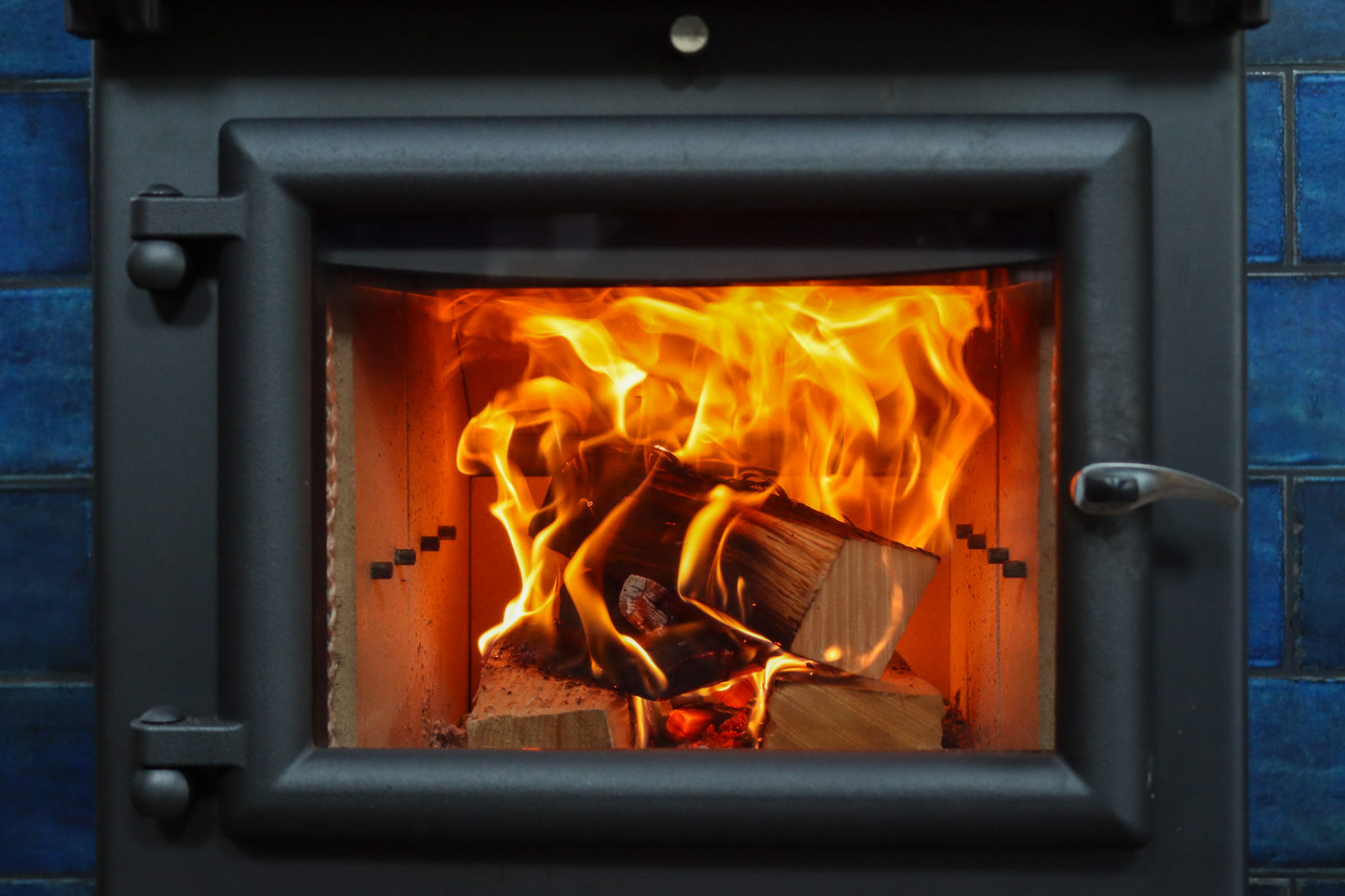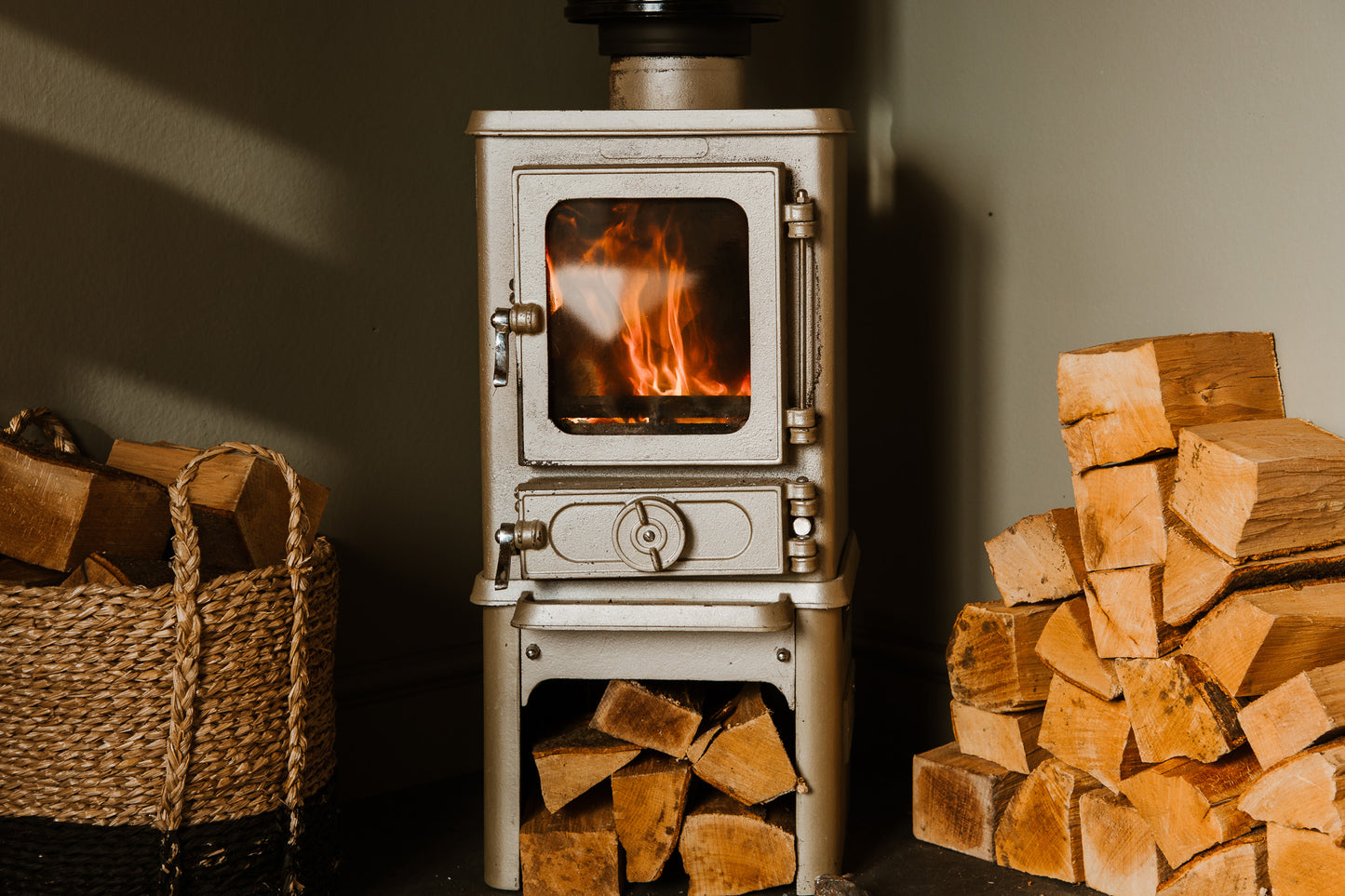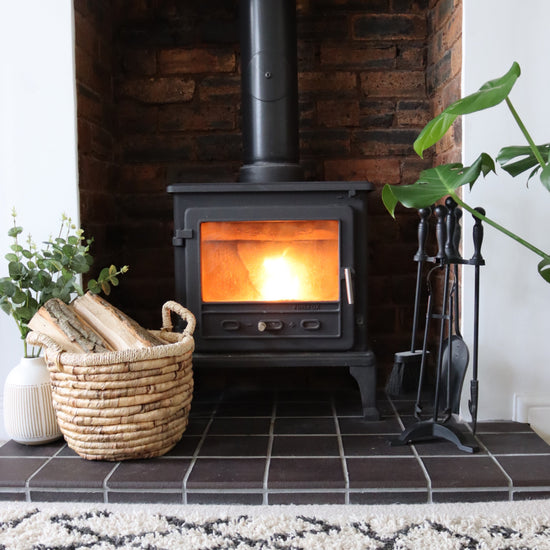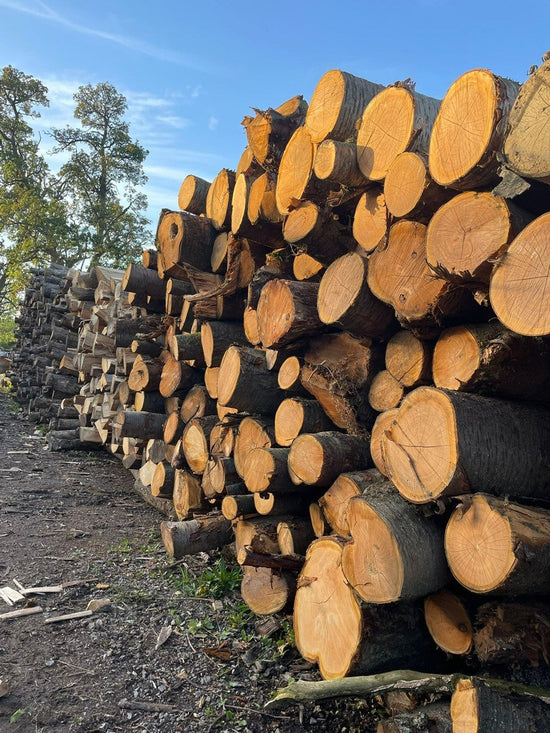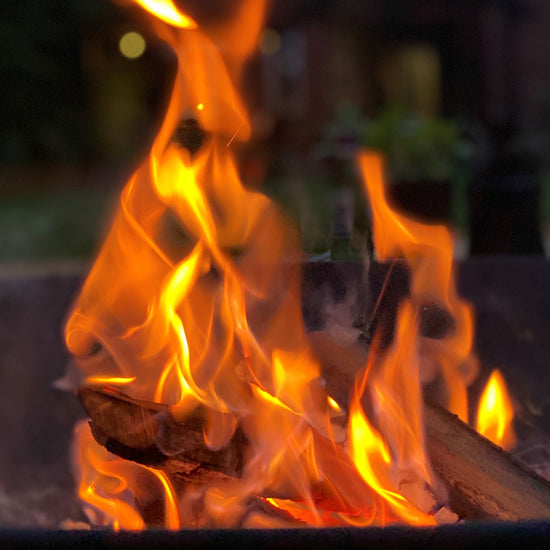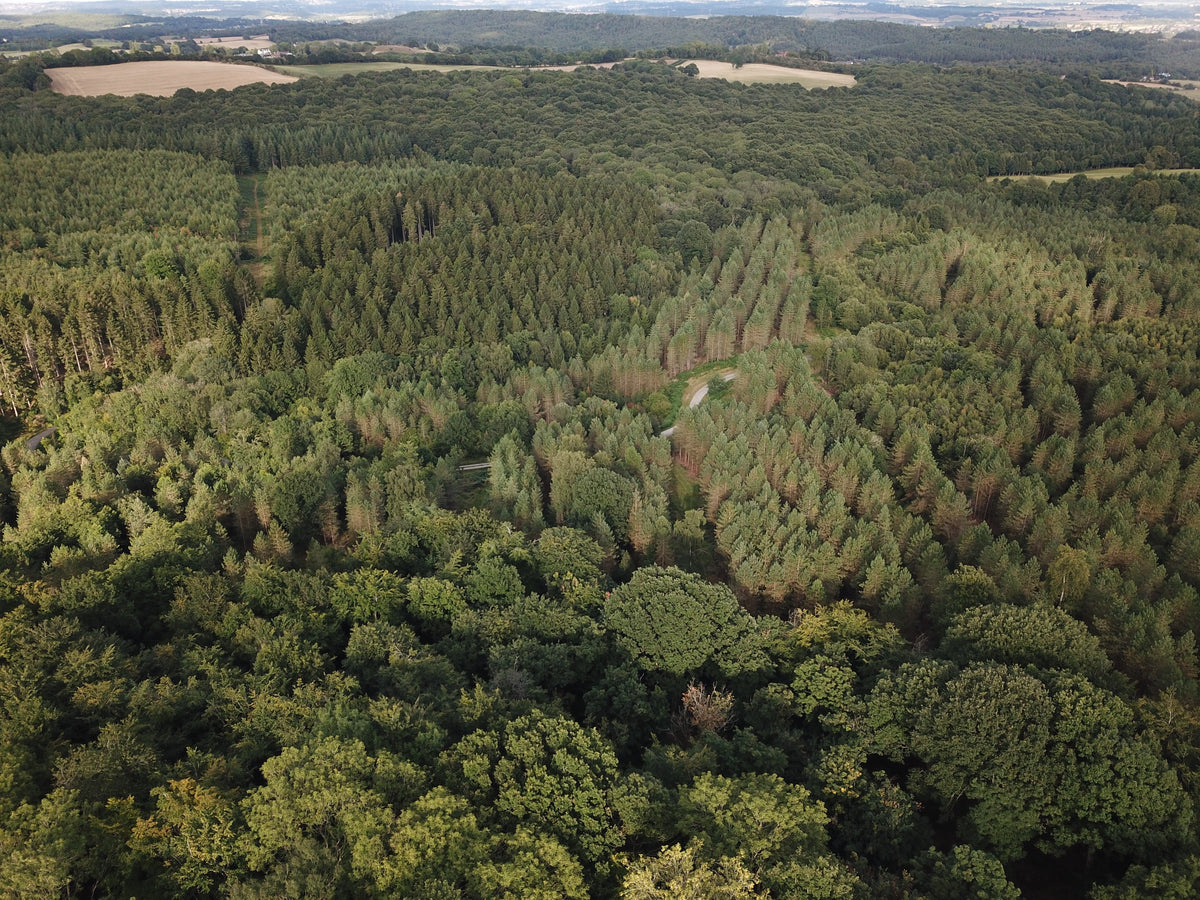

'Is burning wood bad for the environment' is a question I get asked a lot. Most of the information you read online is contradictory and confusing – one source will tell you that biomass energy is saving the world and another will say that wood burners are polluting our cities and causing all the world's health problems.
Like most questions about the environment, there’s not a straightforward answer as to what’s ‘good’ or ‘bad’, but it’s easier to understand when you break it down.
I’m going to talk about three elements of wood burning – renewability, carbon footprint and local pollutants.
Renewability of firewood
Wood is a renewable fuel source when cut from properly managed, sustainable forests.
Simply put, sustainable forestry means that trees are removed to benefit wildlife and biodiversity in the woodland and generally, when trees are felled they’re replaced.
According to Forestry England, woodland cover has doubled in England over the last 100 years, so it’s clear that our sustainable forestry efforts are working!

The same can't be said for anything involving fossil fuels like coal or gas, which take millions of years to renew once they're removed from the ground. The latest estimates say we will probably run out of oil and gas in the next 50 years, so it's vital that we start using more renewable fuel sources.
It is important though, to recognise the difference between burning wood as a heat source in your home and huge businesses using biomass to fuel their factories. There is a problem, especially in Europe, North America, and East Asia, with businesses moving away from fossil fuels to biomass as a more 'sustainable' solution, which is causing too much demand in a short time, resulting in mass deforestation.
A lot of articles which talk about the negative impact of wood burning refer to business use and not UK consumers burning relatively small amounts of firewood per year as their primary heat source!
FYI - biomass is a collective term which means organic matter – anything produced by plants or animals. Biomass energy normally means burning wood, but can also include things like straw, grass and even animal dung!
So is the renewability of burning wood bad?
No, wood is a fully renewable energy source when taken from a sustainable and well managed forest.
Carbon Footprint of wood burning
In case you’ve been living under a rock for the past 10 years, the carbon footprint of an activity or organization is the amount of C02 it releases into the atmosphere, compared to the C02 it removes.
Wood burning as a practice is carbon neutral. Trees absorb carbon dioxide throughout their lifetime and remove it from the atmosphere (which is why tree-planting is so important!) then release that carbon back into the atmosphere when they die.
Wood is not a fossil fuel. When you compare wood burning to fossil fuels like coal, their carbon is built up over millions of years, and would remain safely ‘locked up’ in the ground. If they weren’t burned, it would never be naturally released. By burning them, we're releasing carbon into the atmosphere that shouldn't be there, creating a massive carbon footprint.
When we burn firewood, we only release the carbon that has been stored in the wood during its lifetime back into the atmosphere.
This doesn’t take into account transporting the wood from the forest to your stove. It’s pretty obvious but the further the wood has to travel, the higher the carbon footprint.
So is the carbon footprint of burning wood bad?
Burning wood may not be quite as environmentally friendly as heating with renewable electricity, but it’s safe to say it's better than burning coal or gas! Just make sure you keep the road miles down and only buy British firewood!
Local pollutants from wood burning
This is where wood burning gets its bad reputation, and it's what DEFRA are trying to improve with their Clean Air Strategy.
When wood is burned it emits particulate matter (PM), which are tiny particles of solids or liquids in the air. Some we can see, like smoke and soot, and others are microscopic, but they're all small enough that we breathe them in. This can cause health problems if inhaled in large amounts, so it’s important that we reduce them as much as possible.
How much PM is emitted when you burn wood depends on two things – the wood you burn and the efficiency of your stove.
A properly fitted Ecodesign Ready stove can halve the PM emissions compared to an inefficient, older stove. In some Smoke Control areas, burning wood has already been banned in anything other than DEFRA approved stoves, and since January 2022 all new stove installations have to be Ecodesign Ready.
Likewise, the wood you burn is really important. It goes without saying, but burning anything that has been treated (like old furniture or fence panels) is a massive no-no. Not only do they burn badly, but they can emit toxic pollutants into your home and the environment. Just don’t do it.
At Love Logs, we talk about the moisture content of your firewood a lot. Low moisture content means your logs burn longer and hotter and emit less smoke, so they give you a better experience as a customer. However, they’re also much better when it comes to air quality.
Kiln-dried wood typically emits around half of the PM when compared to wet wood, which is why it’s so important to make sure you only burn wood with a moisture content below 20%.

If you don’t have a moisture tester, you can instantly see when you light your fire how much smoke it’s giving off. In general, the less smoke you can see, the less PM it’s emitting and as a bonus, the cleaner your appliance will be at the end of it!
So is burning wood bad for the environment?
Taking all of this into consideration, burning wood isn’t ‘bad’ for the environment - it’s a renewable energy source with a low carbon footprint. We just need to make sure we do it properly.
- Only buy British wood from sustainable forests (did you know that a lot of what is sold in the UK is actually imported from Eastern Europe!)
- Only burn properly dry (less than 20% moisture content) wood in an efficient appliance
- Don’t buy wood wrapped in plastic. Obviously.
Meet Love Logs
At Love Logs, we only sell British wood, kiln-dried to less than 20% moisture to reduce road miles and give you the cleanest burn. They're shipped directly to your door in 100% plastic-free packaging and we plant a tree for every single order
Found this useful?
We'd love it if you shared it with anyone conflicted about the impacts of burning wood on the environment
